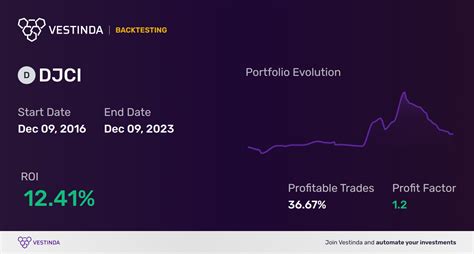Unveiling the Dow Jones Index: A Comprehensive Guide

`markdown
Preview: The Dow Jones Index, often referred to as the Dow, is a cornerstone of financial markets. This guide provides a deep dive into understanding its composition, historical significance, impact, and future outlook. Learn everything you need to know about this influential market indicator.
What is the Dow Jones Index?
The Dow Jones Index, officially known as the Dow Jones Industrial Average (DJIA), is a price-weighted index that tracks 30 large, publicly-owned companies trading on the New York Stock Exchange (NYSE) and the Nasdaq. While it's one of the oldest and most widely recognized stock market indices, it represents a limited segment of the U.S. economy.
A Brief History of the Dow
The Dow Jones Index was created by Charles Dow and Edward Jones in 1896. Initially, it comprised only 12 companies, primarily in the industrial sector. Over time, the composition has evolved to reflect the changing landscape of the American economy. Companies are added and removed based on their relevance and overall standing in the market. The index’s long history makes it a valuable tool for understanding long-term market trends.
How is the Dow Jones Index Calculated?
Unlike many other indices that are market-capitalization weighted, the Dow Jones Index is price-weighted. This means that stocks with higher share prices have a greater influence on the index's value. The calculation involves summing the prices of the 30 stocks and dividing by a divisor, known as the Dow Divisor. This divisor is adjusted periodically to account for stock splits, spin-offs, and other corporate actions, ensuring the continuity of the index. Understanding this calculation method is crucial for interpreting the index's movements.
The Dow's Impact on the Financial Market
The Dow Jones Index serves as a benchmark for investors and analysts. Its performance is often used as a general indicator of the overall health of the U.S. stock market and economy. A rising Dow typically signals economic optimism, while a falling Dow can indicate economic uncertainty. While it shouldn’t be the sole determinant for investment decisions, it holds significant sway over market sentiment.
Relevance in Today's Market
Given it's weighted by price, the Dow's reliance on just 30 companies can make it a more narrow view than broader indexes. Some analyst argue the S&P 500 may offer a better snapshot of the market's health as it's cap-weighted and comprises 500 companies.
Components of the Dow Jones Index
The Dow Jones Index is composed of 30 leading companies from various sectors, including technology, finance, healthcare, and consumer goods. These companies are selected based on their reputation, growth prospects, and sustained interest from investors. Some notable components include:
- Apple (AAPL)
- Microsoft (MSFT)
- Goldman Sachs (GS)
- UnitedHealth Group (UNH)
- McDonald's (MCD)
- The Dow Jones Index is a price-weighted index of 30 large U.S. companies.
- It serves as a benchmark for the U.S. stock market.
- The index has evolved significantly since its inception in 1896.
- Investors can gain exposure through ETFs and mutual funds.
The composition of the Dow Jones Index is not static. S&P Dow Jones Indices LLC, the company responsible for maintaining the index, periodically reviews and adjusts the constituents to ensure the index remains representative of the U.S. economy.
Investing in the Dow Jones Index
While you cannot directly invest in the Dow Jones Index, you can gain exposure through exchange-traded funds (ETFs) and mutual funds that track the index's performance. These investment vehicles offer a diversified way to participate in the potential growth of the 30 component companies. Before investing, carefully consider your risk tolerance and investment goals.
The Future of the Dow Jones Index
The Dow Jones Index will likely continue to evolve as the U.S. economy changes. We can expect to see changes in constituent companies as some companies' market position ebbs and flows. Future challenges could include keeping up with changes in tech and potential new regulations.
Dow Jones Index: Key Takeaways
FAQ About the Dow Jones Index
Q: What is the Dow Jones Index used for?
A: The Dow Jones Index is used as a gauge of the overall health of the U.S. stock market and economy. It helps investors understand market trends and make investment decisions, though considered by some to be an aging index.
Q: How often is the Dow Jones Index updated?
A: The Dow Jones Index is calculated and updated in real-time throughout the trading day.
Q: How does the Dow Jones Index differ from the S&P 500?
A: The Dow Jones Index comprises only 30 companies and is price-weighted, while the S&P 500 includes 500 companies and is market-capitalization weighted. This means the S&P 500 is generally considered a broader and more representative measure of the U.S. stock market, particularly amongst market analysts.
Q: Is the Dow Jones Index a good indicator of the overall economy?
A: While the Dow Jones Index reflects the performance of 30 large companies, it's not a perfect indicator of the overall economy. Other economic indicators, such as GDP growth, employment rates, and inflation data, should also be considered.
`





